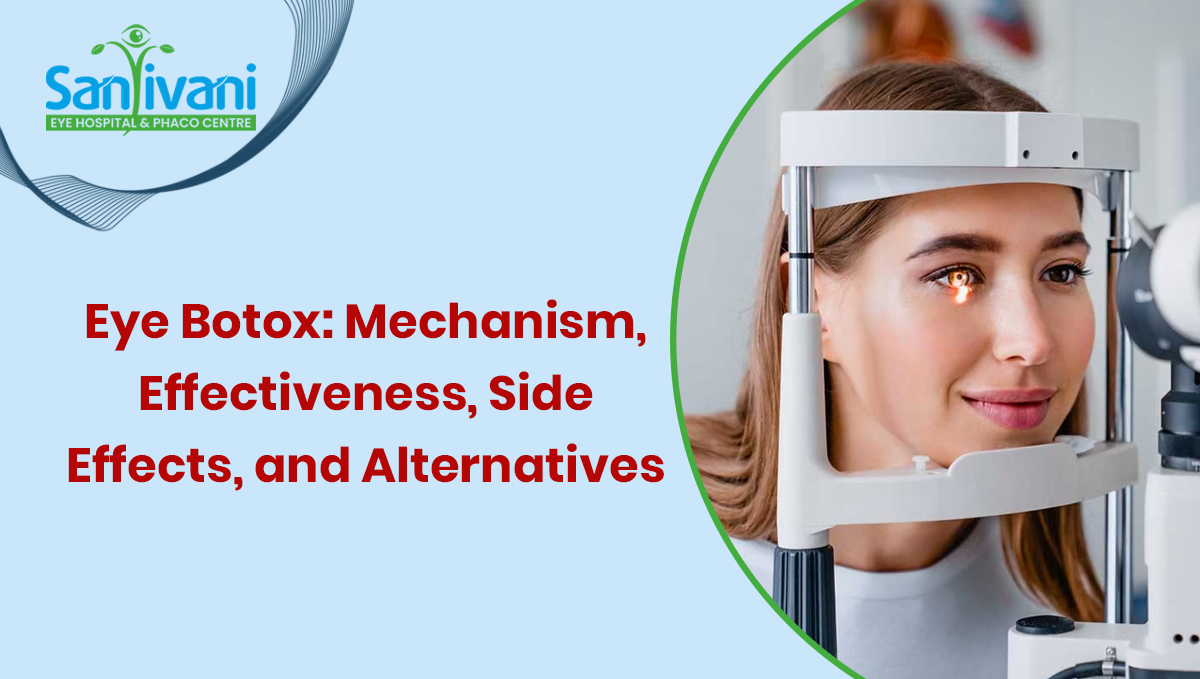
Eye Botox: Mechanism, Effectiveness, Side Effects, and Alternatives
Introduction:
In the realm of cosmetic procedures, Botox has gained widespread popularity for its ability to reduce wrinkles and fine lines, providing individuals with a rejuvenated appearance. While Botox is commonly associated with facial treatments, a specialized form known as "Eye Botox" has emerged, focusing on addressing issues around the eyes. In this article, we will delve into the working mechanism of Eye Botox, its effectiveness, potential side effects, and alternative options.
Working Mechanism:
Working Mechanism:
A warm, moist, gentle compress applied to the eye stie facilitates pus release and reduces discomfort and swelling. A syndrome may recur.
Effectiveness:
The effectiveness of Eye Botox varies from person to person and depends on factors such as individual anatomy, the severity of wrinkles, and the skill of the practitioner. Generally, patients may start noticing improvements within a few days to a week after the treatment, with the full effects becoming evident within two weeks. The results are temporary, typically lasting three to four months, necessitating repeated treatments to maintain the desired outcome.
Side Effects:
While Eye Botox is generally considered safe when administered by a qualified professional, it is essential to be aware of potential side effects. Common side effects include temporary redness, swelling, and bruising at the injection site. In some cases, patients may experience headaches or mild discomfort. More serious but rare side effects can include drooping eyelids, double vision, or difficulty closing the eyes. It is crucial to communicate any concerns or unusual symptoms with the practitioner promptly.
Alternatives to Eye Botox:
- 1. Dermal Fillers: Dermal fillers, such as hyaluronic acid-based injections, offer an alternative approach to combatting signs of aging around the eyes. These fillers work by plumping up the skin, reducing the appearance of fine lines and wrinkles. Unlike Botox, dermal fillers address volume loss and can be particularly effective in treating under-eye hollows.
- 2. Chemical Peels: Chemical peels involve the application of a chemical solution to the skin, promoting exfoliation and the removal of damaged outer layers. This procedure can improve skin texture and reduce the appearance of fine lines and wrinkles. Chemical peels are available in varying strengths, allowing for customization based on individual needs
- 3. Microcurrent Therapy: Microcurrent therapy utilizes low-level electrical currents to stimulate facial muscles and promote collagen production. This non-invasive procedure aims to tighten and tone the skin, potentially reducing the appearance of fine lines around the eyes.
- 4. Topical Retinoids: Retinoids, such as retinol and prescription-strength formulations, can be applied topically to promote collagen production and skin renewal. Regular use of retinoids may help diminish fine lines and improve overall skin texture.
Eye Botox can be a valuable tool in the anti-aging arsenal, providing a temporary solution to wrinkles and fine lines around the eyes. However, it is essential for individuals considering this treatment to weigh its effectiveness against potential side effects. Alternatives such as dermal fillers, chemical peels, microcurrent therapy, and topical retinoids offer diverse options to address aging concerns, allowing individuals to choose the approach that aligns best with their preferences and needs. Before undergoing any cosmetic procedure, consultation with a qualified healthcare professional is crucial to ensure a safe and satisfactory experience.